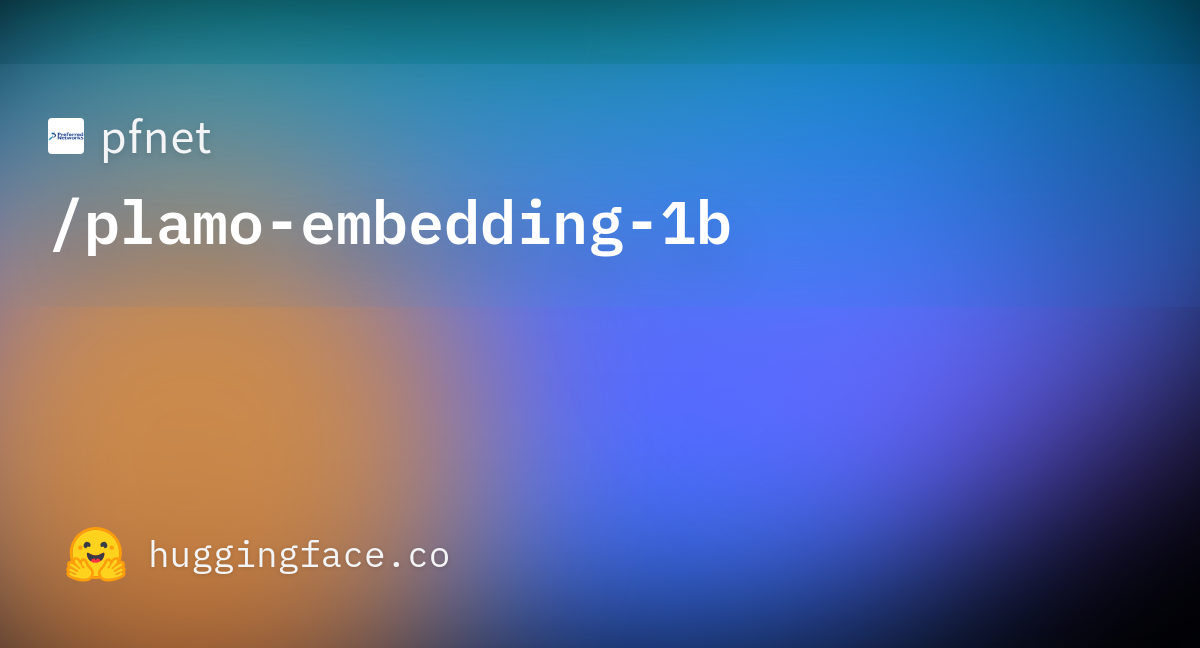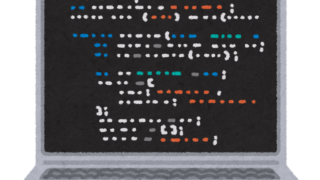文章を数値ベクトルに変換することができるテキスト埋め込みモデルのPLaMo-Embedding-1Bを今回触ってみます

pfnet/plamo-embedding-1b · Hugging Face
We’re on a journey to advance and democratize artificial intelligence through open source and open science.
前提条件
- Python
- git
- git lfs(https://git-lfs.com/)
が使用するPCにインストールされていることを確認してください
モデルダウンロード
とりあえずgitコマンドでPLaMo-Embedding-1Bをcloneしてきます
以下のコマンドをPowershellかコマンドプロンプトに貼り付けて実行します
git clone https://huggingface.co/pfnet/plamo-embedding-1b
プログラム
PLaMo-Embedding-1Bのフォルダの上位にmain.pyを作成します

動作確認のためサンプルコードをmain.pyにいれます
import torch
import torch.nn.functional as F
from transformers import AutoModel, AutoTokenizer
# You can download models from the Hugging Face Hub 🤗 as follows:
tokenizer = AutoTokenizer.from_pretrained("pfnet/plamo-embedding-1b", trust_remote_code=True)
model = AutoModel.from_pretrained("pfnet/plamo-embedding-1b", trust_remote_code=True)
device = "cuda" if torch.cuda.is_available() else "cpu"
model = model.to(device)
query = "PLaMo-Embedding-1Bとは何ですか?"
documents = [
"PLaMo-Embedding-1Bは、Preferred Networks, Inc. によって開発された日本語テキスト埋め込みモデルです。",
"最近は随分と暖かくなりましたね。"
]
with torch.inference_mode():
# For embedding query texts in information retrieval, please use the `encode_query` method.
# You also need to pass the `tokenizer`.
query_embedding = model.encode_query(query, tokenizer)
# For other texts/sentences, please use the `encode_document` method.
# Also, for applications other than information retrieval, please use the `encode_document` method.
document_embeddings = model.encode_document(documents, tokenizer)
# The similarity between vectors obtained by inputting sentences into the model is high for similar sentences and low for dissimilar sentences.
# This feature can be utilized for applications such as information retrieval.
similarities = F.cosine_similarity(query_embedding, document_embeddings)
print(similarities)
# tensor([0.8812, 0.5533])Pythonで必要なパッケージをインストールします
pip install torch torchvision transformers 以下の通りに実行すると動作しました
実行
python .\main.py
model.safetensors: 100%|██████████████████████████████████████████████████████████████████████████████████████████████████████████████████████████████████████████████████████████████████| 2.10G/2.10G [09:23<00:00, 3.73MB/s]
tensor([0.8812, 0.5533])以下は実行結果です。これは、クエリの埋め込みベクトルと各文書の埋め込みベクトルとの間のコサイン類似度を計算します。
tensor([0.8812, 0.5533])この例の場合、
最初の文書(”PLaMo-Embedding-1Bは、Preferred Networks, Inc. によって開発された日本語テキスト埋め込みモデルです。”)は、クエリ(”PLaMo-Embedding-1Bとは何ですか?”)と高い類似度(0.8812)を持っていることがわかります。
一方、2番目の文書(”最近は随分と暖かくなりましたね。”)は、クエリとの類似度が低い(0.5533)ことが示されています。















コメント